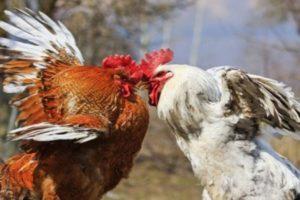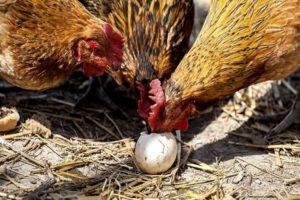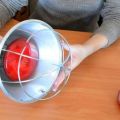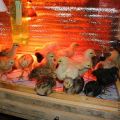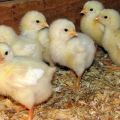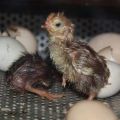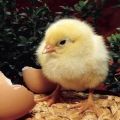Table and diagrams of drinking chickens with antibiotics and vitamins
Broiler chickens are more susceptible to bacterial and viral diseases, poor-quality living conditions than chicks of common breeds. To preserve young livestock, poultry farmers use certain medicines. Below is detailed information on how to properly drink chickens with antibiotics and vitamins, the table shows the procedure diagrams.
Features and feasibility of drinking
Farmers have mixed feelings about drinking. Some believe that the procedure is extremely important for the preservation of young animals. Others believe that it is enough to follow the rules of care and feed the chicks well for them to survive. Some poultry farmers give antibacterial and vitamin preparations to chickens already in the first days of their life, others use only vitamins.
The breed of young stock affects the need for drinking. If the chicks are normal, then the procedure is not necessary. If a broiler or hybrid breed is purchased that is susceptible to adverse conditions, then it is imperative to solder. Otherwise, there is a high probability of losing all livestock.
The preparations used for drinking water not only prevent fatal pathologies, but also have a positive effect on the development of the body, the work of the digestive organs, and contribute to an increase in the productivity of birds in the future.
To choose the correct drinking scheme, you should ask the seller:
- whether any drugs were used before the young were sold;
- what medications were used;
- whether young animals were vaccinated;
- whether the parents of the brood had any illnesses.

What diseases are chickens susceptible to?
The body of newly hatched chicks is susceptible to infection and other adverse factors. If you ignore the rules of care in the first few days, you can lose 40-100% of the livestock.
Purchased chicks raised in an incubator are especially sensitive.
The strongest mortality of broilers is observed on days 10-14.
Newborn chicks are prone to pathologies associated with:
- weakening of immunity;
- previously used drugs;
- drafts, temperature fluctuations and other unfavorable conditions.
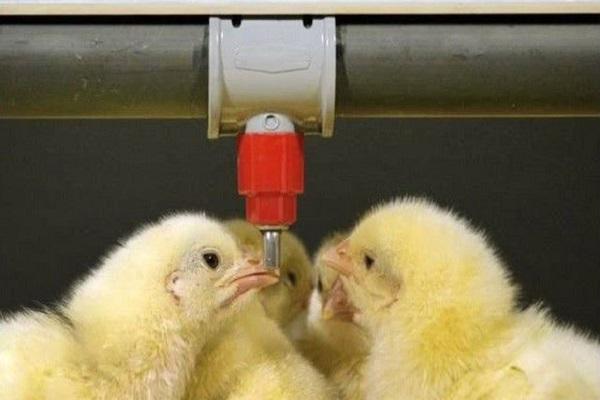
A sick chicken is identified by the following symptoms:
- inactive behavior, constant sleepiness;
- poor appetite;
- lack of response to the included light and other stimuli.
A sick chick is removed from its fellows, as it can become a spread of infection.
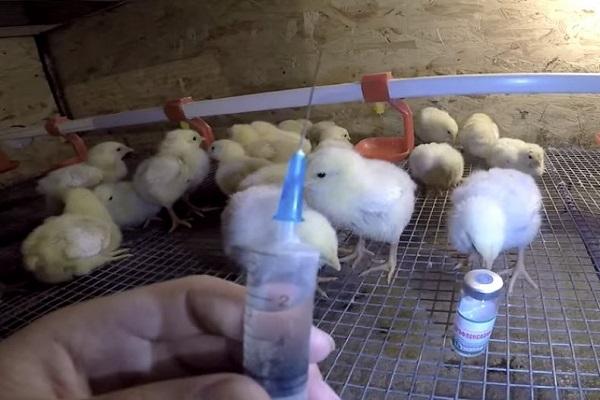
Drinking schemes
Choose one of two drinking patterns.
In the first regimen, the use of antibiotics is postponed.The principle is based on the fact that in the first days of life in chicks the intestinal microflora is sterile, therefore, adequate nutrition and the use of vitamins are enough to populate the intestines with beneficial microorganisms and form a strong immunity.
Table of the first scheme of drinking.
| First day | Neonates should be drunk with dissolved glucose so that the residual yolk is quickly absorbed. The solution has an immunostimulating and anti-inflammatory effect, strengthens the digestive system, reduces susceptibility to stress. Use a 3 or 5% solution. It is bought in a pharmacy or prepared on its own: 1 teaspoon of sugar per liter of water. |
| 2-7 day | The use of vitamins begins. A good drinking option is the Lovit complex (5 ml is dissolved in a liter of water). |
| 8-10 | Antibiotics are administered according to the instructions: Baytril, Enrostin, Enroflox. |
| 11-18 | Pause between courses. |
After a pause, the course is repeated, and so on throughout the bird's life.

In the second scheme, shown in the table below, broilers are given antibiotics from birth.
| Up to 5 days | Antibiotics are used: Baytril (1 ml ampoule for 2 liters of water), Enroxil - according to the instructions. |
| 6-10 | Vitamins are used: Chiktonik complex or Aminovital (2 ml per liter of water). |
| 11-14 | Prevention of coccidosis is carried out. Usually the drug Baycox is used (1 ml ampoule with a 2.5% solution per liter of water). |
| 15-18 | The course of vitamins is repeated according to the same scheme. |
| 19-22 | The course of antibiotics is repeated. |
The most common drugs
There are a large number of preparations on the market for drinking daily and weekly chicks. Before carrying out the procedure, you should carefully study the instructions for the antibiotic and the vitamin complex.
Vitamin
Complexes of vitamins for drinking water are divided into fat-soluble and water-soluble.
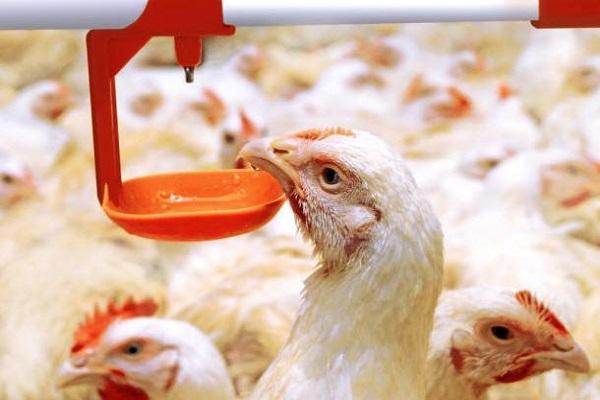
Fat-soluble vitamins
Experienced poultry farmers use the following vitamins for drinking:
- Fish oil, saturated with vitamins A, E, D, important for the full development of the bird's body. When using the product, you should carefully monitor its shelf life, which is no more than 6 months under the correct storage conditions. Spoiled fat is extremely harmful to chicks.
- Trivit, based on vitamins A, E, D. To prevent hypovitaminosis, the solution is instilled into the birds' nostrils, mixed with food.
- Tetravit. The composition is similar to the previous one, plus vitamin F (unsaturated fatty acids).
Water-soluble complex
Vitamins for drinking:
- Chiktonik, which is a mixture of vitamins A, D, E, amino acids. The liquid solution has an anti-stress effect, therefore it is given not only to young animals, but also to transported chickens for calming (within 3 days before and after transportation).
- Aminovital. The composition is similar to the previous one, but minerals and ascorbic acid are added.
- Nutril Se is a powder complex used as an immunostimulant. The amino acid composition is small, but there is selenium - a strong antioxidant.
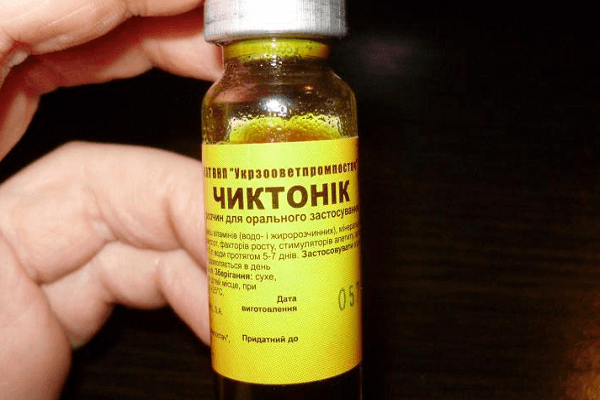
Antimicrobial
If vitamins are completely harmless to both chicks and people who eat chicken meat, then caution should be exercised with antibiotics. There are time limits on the consumption of poultry that has been taking medication. But it is difficult to do without antibiotics.
There are simple antimicrobial agents used in private backyards and professional ones for poultry farms.
Traditional antimicrobial agents
Owners of private households usually use antibiotics:
- injectable Penicillin (ampoule for a day of drinking sick chickens);
- Tetracycline;
- Levomycetin;
- Biovit is a product derived from tetracycline, saturated with B vitamins.
The problem is that the listed medicines should be used very carefully so as not to harm either the chickens or yourself.Some farmers abuse antibiotics, and then eat themselves and send harmful meat and eggs for sale.

Professional antimicrobial drugs
Poultry farmers use antibiotics during the most dangerous periods of chicks' life: on the first, fifth and eighth days.
It is unacceptable to give medications to broilers of 4 weeks of age, since the chemistry will not have time to leave the body before slaughter.
Antibiotics are used:
- Enroflox. 0.5 ml per liter of water. Use within 5 days.
- Enromag. The dosage is similar. Water change daily.
- Ceproceryl. 10 g per 10 liters of water. Reception during the week.
- Tylosin. 5 g per 10 l of water at 1-3 days of life. For consolidation - a single application at 4 weeks of age.
- Tromexin. 5 g per 10 liters. Application from 5 days of age for 5 days.

When and how are chicks vaccinated?
Vaccination is a good way to protect young animals from infectious diseases. The procedures are done according to a strict scheme, which includes 3 stages:
- Prevention of bursitis and bronchitis. Use Nobilis vaccine for 2 week old chicks. The contents of one ampoule are dissolved in warm water, the birds are watered.
- Reapplication of Nobilis vaccine for 24-day-old chicks. For one individual take 7.5 ml of ampoule solution.
- 3 days after the previous one. The La Sota vaccine for Newcastle disease is used, diluted in drinking water or instilled into the nostrils and eyes. 7.5 ml is taken for one individual.
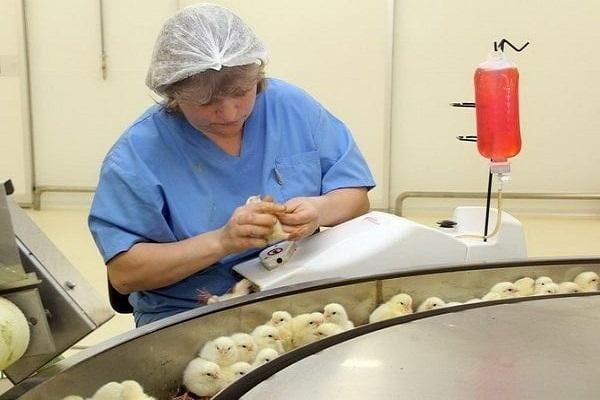
Moving chickens to the poultry house
New cages should be disinfected before relocating chicks. Use means Biodez-R and Virkon-C 2% concentration. The treated chicken coop should remain closed for 30 minutes, then it must be ventilated. Next, they are treated with the antiparasitic agent Butox (dissolved in water in a ratio of 1 to 2). Ventilate the chicken coop again for 5 hours.

Tips from experienced poultry farmers
Poultry breeders' recommendations for drinking:
- Antibiotics are given strictly according to the scheme. If you do not follow the course, then the pathogens will develop resistance (immunity) to drugs.
- The preparations are diluted in settled water.
- Drinking solutions are not prepared in advance. The next day they are already useless. A fresh medicine is made for each dose.
- All drinkers are thoroughly washed before the next course of antibiotics.
It should be remembered that excess antibiotics are harmful. If the young are healthy, then you should not be zealous with prevention. However, it is unlikely that it will be possible to do without medications at all, especially when growing hybrid and broiler breeds with weak immunity..
